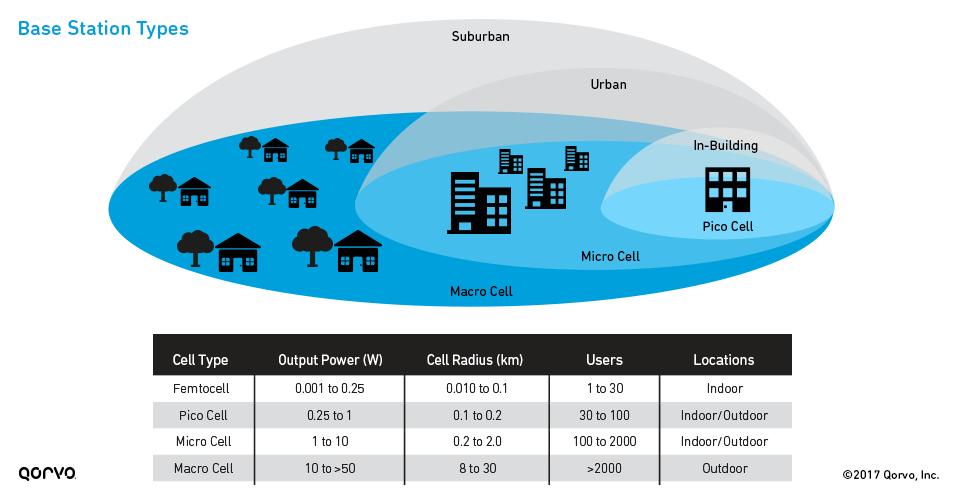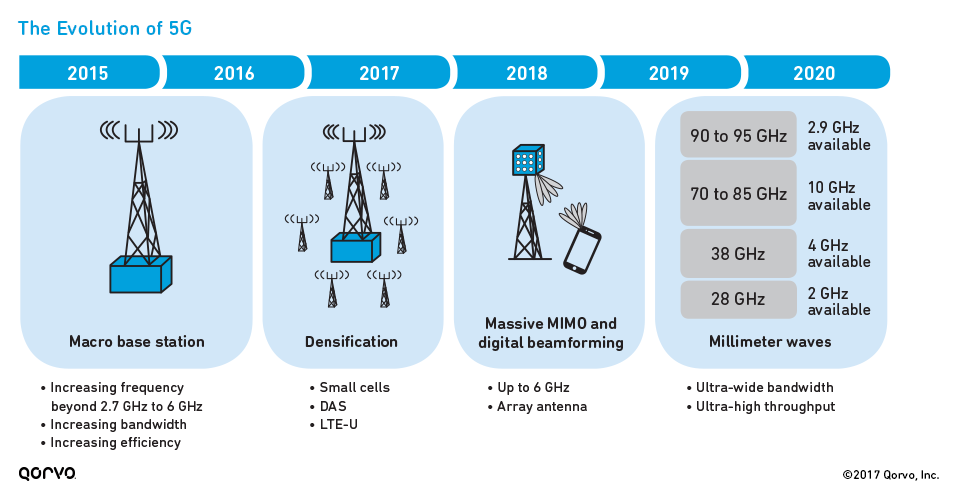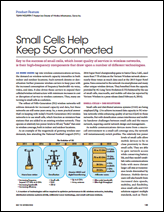Small Cell Networks and the Evolution of 5G (Part 1)
May 17, 2017
This is the first blog post in a 2-part series looking at small cell base stations. Part 1 covers the basics of small cells and how they fit into the evolution of 4G and 5G. Part 2 will look at the latest trends and design challenges in the small cell market.
Wireless infrastructure today includes many elements – macro base stations, metro cells, outdoor and indoor distributed antenna systems (or DAS), small cells and more – all working together in a heterogeneous network, or HetNet (see figure below).

Mobile device users are moving from smaller data packet information (pictures, email, web browsing, etc.) to mediums that require larger data packets (such as video, gaming and live streaming). This requires networks with fast handovers and data uplinks/downlinks (ULs/DLs) from tower to tower, whether small or large. Small cell densification provides an efficient and inexpensive solution – and the foundation toward building a 5G future.
What is a small cell?
A small cell is basically a miniature base station that breaks up a cell site into much smaller pieces, and is a term that encompasses pico cells, micro cells, femtocells and can comprise of indoor/outdoor systems. With a macro base station, there's one pipe going into the network; with small cells, it breaks the pipe into many pipes. The main goal of small cells is to increase the macro cell's edge data capacity, speed and overall network efficiency.
Small cells were added in Release 9 of the 3GPP LTE spec in 2008, and are one element of network densification, or adding more base station connections to the existing wireless infrastructure.
Go in Depth
Learn more about small cells:
- HetNet/Small Cells (3GPP)
- 5G Exposed! (Electronic Design, Apr. 2017)
- What is network densification and why is it needed for 5G? (RCR Wireless, Nov. 2016)
Small cells are typically used in very densely populated urban areas, such as shopping centers, sports venues, airports and train stations – basically anyplace you have a lot of people using data at a given point in time. Most small cell infrastructure deployments are targeted for outdoor use today. In contrast, indoor small cell systems may or may not incorporate Wi-Fi or unlicensed LTE bands (LTE-U)/Licensed Assisted Access (LAA), depending on the capabilities that service providers want to support.
See the figure below for a snapshot of the output power, cell radius sizes and other features of different base station types, from small cells to macro cells.

How do small cells fit into the 5G revolution?
In laymen's terms, 5G will provide increased data capacity, lower latency and longer battery life.
- 5G will not replace 4G; it simply enables a larger diversity of applications that 4G cannot perform. 4G networks such as small cells will continue to advance in parallel with 5G. (See figure below.)
- 5G NR (new radio) networks are not expected to be operational until at least 2020, which means 5G mobile devices will not show up until after 5G networks are incorporated.

Small cells help in this pre-5G/LTE-Advanced Pro (LTE-A Pro) transition because they:
- Provide increased data capacity
- Help service providers eliminate expensive rooftop systems and installation or rental costs, which reduces the overall cost
- Help improve the performance of mobile handsets. If your phone is closer to a small cell base station, it transmits at lower power levels, which effectively lowers the power out of the cell phone and substantially increases its battery life.
There's currently a lot of discussion that true 5G will operate at higher frequency bandwidths, such as 28 GHz or 39 GHz. Small cells will also be critical at these millimeter wave (mmWave) frequencies because the signals cannot penetrate walls or buildings and the cell sizes will have a coverage radius of less than 500 meters. Years down the road, there may be an overlay for those 5G networks, on top of the systems used for small cells today.
Want to know more about small cells? Our next blog post will look at the top trends and design tips for small cells.
Have another topic that you would like Qorvo experts to cover? Email your suggestions to the Qorvo Blog team and it could be featured in an upcoming post. Please include your contact information in the body of the email.

